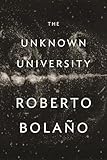 Four years ago, in an attempt to help readers navigate the flood tide of Roberto Bolaño books appearing posthumously in English, we at The Millions put together a little syllabus. Little did we know how rash our promise to update “as further translations become available” would soon seem. Within two years, the release of six additional titles had rendered the first version nugatory. And since then, six more have become available.
Four years ago, in an attempt to help readers navigate the flood tide of Roberto Bolaño books appearing posthumously in English, we at The Millions put together a little syllabus. Little did we know how rash our promise to update “as further translations become available” would soon seem. Within two years, the release of six additional titles had rendered the first version nugatory. And since then, six more have become available.
Indeed, it’s hard to think of another figure in the history of weltliteratur whose catalogue has made it so quickly to these shores, or whose literary executors have been speedier – not to say more punctilious – in publishing his archive. Though Bolaño’s imagination seems inexhaustible, it’s hard not to greet the news of yet another “lost work” or “early work” or “lost early work” with fatigue. (Or even, given the overlap between certain editions, suspicion.) Yet the most recent publication, the poetry omnibus The Unknown University, is a major work, and should be the exclamation point at the end of the Bolaño boom. (Though there was that new story in The New Yorker a few weeks ago, so maybe Andrew Wylie knows something we don’t… And there’s always Advice from a Morrison Disciple to a Joyce Fanatic, co-written with A.G. Porta in 1984.)
At any rate, this seems an opportune time to revisit, once and for all, our Bolaño syllabus, which has more than doubled in size since 2009. Where originally we arranged the list as a kind of guided tour, it seems most worthwhile at this point to divide the available work into tiers: what you need to read, what you might want to, and what you can pass over without losing sleep.
The Essential
1. The Savage Detectives

 2666 may be more admirable, but The Savage Detectives is more loveable (think Moby-Dick vs. Huckleberry Finn). As such, it’s the Bolaño book I tend to urge on people first. Read The Savage Detectives all the way to the end, and you’ll understand why one might want to try to read this writer’s entire corpus. (See our review).
2666 may be more admirable, but The Savage Detectives is more loveable (think Moby-Dick vs. Huckleberry Finn). As such, it’s the Bolaño book I tend to urge on people first. Read The Savage Detectives all the way to the end, and you’ll understand why one might want to try to read this writer’s entire corpus. (See our review).
2. 2666
There is no other novel of the last decade that I think about more often, years after having read it. My enthusiastic take here now seems to me embarrassingly inadequate. A bona fide masterpiece.
3. Last Evenings on Earth
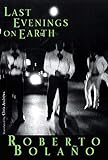 The best, by a whisker, of the five collections of short fiction available in English – largely because New Directions can’t have foreseen how big Bolaño was going to be, and so raided his Anagrama editions for the best stories. Highlights include “Dance Card,” “Sensini,” “The Grub,” “Mauricio ‘The Eye’ Silva,” and “Gomez Palacio.”
The best, by a whisker, of the five collections of short fiction available in English – largely because New Directions can’t have foreseen how big Bolaño was going to be, and so raided his Anagrama editions for the best stories. Highlights include “Dance Card,” “Sensini,” “The Grub,” “Mauricio ‘The Eye’ Silva,” and “Gomez Palacio.”
4. The Return
Another strikingly good collection, overlooked perhaps because of its appearance in 2010, when the Bolaño marketplace was already flooded. Between it and Last Evenings on Earth, you end up with the whole (I think) of the two collections published in Spanish during Bolaño’s lifetime. I especially love the title story. And for those inclined to read the Bolaño oeuvre as a roman-fleuve, you get here the porny “Prefigurations of Lalo Cura.”
5. Nazi Literature in the Americas
 This early “novel,” a biographical encyclopedia of invented writers, offers our first glimpse of the ambition that would effloresce in the two big books. Not incidentally, it’s an excellent introduction to Bolaño’s peculiar sense of humor, which enjambs the absurd and the deadpan until it’s hard to tell which is which. Come to think of it, it’s probably his funniest book. (See our review).
This early “novel,” a biographical encyclopedia of invented writers, offers our first glimpse of the ambition that would effloresce in the two big books. Not incidentally, it’s an excellent introduction to Bolaño’s peculiar sense of humor, which enjambs the absurd and the deadpan until it’s hard to tell which is which. Come to think of it, it’s probably his funniest book. (See our review).
6. Distant Star
This is my favorite of Bolaño’s short novels, and the other book I tend to recommend to neophytes. An expansion of a chapter in Nazi Literature, it yokes together two signature preoccupations: poetry and detectives.
7. The Unknown University
This beautiful dual-language edition purports to include “all of the poems of the great Roberto Bolaño.” Perhaps that should be “all of the great poems of Roberto Bolaño”; a quick comparison reveals some titles in The Romantic Dogs that I can’t find here. But you get most of that collection, plus Tres, plus the novel in prose-poems Antwerp, as well as a couple hundred other poems. As with The Secret of Evil and Woes of the True Policemen, the “history of the book” Bolaño’s executors provide here is weirdly hard to parse, but concerns fall away in the reading. At every turn there’s a sense that this manuscript was indeed the life’s work in poetry of a writer who valued poetry above all other genres. Verse narratives like “The Neochileans” have the impact of Bolaño’s best short novels. The lyric poems lose more in Laura Healy’s translation, especially as Bolaño likes to deal in fragments. As Jeff Peer noted here, the shorter pieces veer, albeit with a charming kind of indifference, between notebook and dream journal, genius and juvenilia. And because there are so many of these short poems, displayed one to a page, the book looks more tomelike than it is. Still, it is very much greater than the sum of its parts, and some of those parts are already very great indeed. The addictive element in Bolaño, more than anything else, is his sui generis sensibility, and this book is that sensibility distilled.
8. Between Parentheses
 For those of you keeping score at home, that’s four genres Bolaño excelled in: the meganovel, the novella, the poem, and the short story. What are the odds that his collected nonfiction could be indispensable? Especially when most of it consists of occasional speeches and short newspaper work? Well, odds be damned. This book is great, in a way that reminds me of Jonathan Lethem’s recent and similarly loose-limbed The Ecstasy of Influence. There’s something fascinating about listening in as a writer talks shop, more or less off the cuff. Parts two through five do double-duty as an encyclopedia of Latin American fiction. And “Beach,” actually a short story, is one of Bolaño’s best.
For those of you keeping score at home, that’s four genres Bolaño excelled in: the meganovel, the novella, the poem, and the short story. What are the odds that his collected nonfiction could be indispensable? Especially when most of it consists of occasional speeches and short newspaper work? Well, odds be damned. This book is great, in a way that reminds me of Jonathan Lethem’s recent and similarly loose-limbed The Ecstasy of Influence. There’s something fascinating about listening in as a writer talks shop, more or less off the cuff. Parts two through five do double-duty as an encyclopedia of Latin American fiction. And “Beach,” actually a short story, is one of Bolaño’s best.
9. By Night in Chile
Bolaño’s most formally perfect short novel, it is also the most self-contained. It offers a torrential dramatic monologue by a Catholic priest implicated in torture during Chile’s U.S.-backed Pinochet era. Some readers I respect think this is his best book. Though it plays its source material straighter than is typical in Bolaño, it might be another good one for norteamericanos to start with.
The Merely Excellent
1. The Third Reich
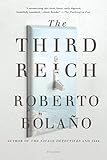 This was another book that I thought got a bit lost in the shuffle of 2009-2011, when an astonishing 1,800 pages of Bolaño’s prose made their way into English. Otherwise, it might have been recognized as one of the best novels published in English in the latter year. Certainly, it’s the strongest of Bolaño’s apprentice books. Here, the master seems to be David Lynch; all is atmosphere, atmosphere, atmosphere, as the failure of a plot to precipitate becomes itself a source of terrible foreboding. I’m also a sucker for the “visceral realism” of Natasha Wimmer’s translations, though I can’t speak to their accuracy.
This was another book that I thought got a bit lost in the shuffle of 2009-2011, when an astonishing 1,800 pages of Bolaño’s prose made their way into English. Otherwise, it might have been recognized as one of the best novels published in English in the latter year. Certainly, it’s the strongest of Bolaño’s apprentice books. Here, the master seems to be David Lynch; all is atmosphere, atmosphere, atmosphere, as the failure of a plot to precipitate becomes itself a source of terrible foreboding. I’m also a sucker for the “visceral realism” of Natasha Wimmer’s translations, though I can’t speak to their accuracy.
2. Amulet
Amulet on its own is a wonderful reworking of the Auxilio Lacouture monologue from The Savage Detectives, and a chance to get to spend more time with that book’s presiding spirits, Ulises Lima and Arturo Belano. It also contains some of Bolaño’s most bewitching sentences, including the one that seems to give 2666 its title: “Guerrero, at that time of night, is more like a cemetery than an avenue, not a cemetery in 1974 or 1968, or 1975, but a cemetery in the year 2666, a forgotten cemetery under the eyelid of a corpse or an unborn child, bathed in the dispassionate fluids of an eye that tried so hard to forget one particular thing that it ended up forgetting everything else.”
3. The Insufferable Gaucho
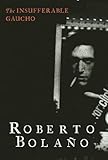 Here you get the sublime Kafka takeoff “Police Rat” and a sort of cover version of Borges’s “The South,” each approaching novella length. However, the decision to pair the five stories (a version of one of which also appears in Between Parentheses) with two (excellent) essays gives this collection as a whole a distinctly “odds and sods” feel.
Here you get the sublime Kafka takeoff “Police Rat” and a sort of cover version of Borges’s “The South,” each approaching novella length. However, the decision to pair the five stories (a version of one of which also appears in Between Parentheses) with two (excellent) essays gives this collection as a whole a distinctly “odds and sods” feel.
4. The Secret of Evil
Another posthumous gallimaufry, but one I found totally delightful. Notwithstanding the magician’s indirection with which the “Preliminary Note” attempts to justify the book’s publication, it’s pretty clear that much of what’s here is in rough form. But as with Between Parentheses, it’s thrilling to see Bolaño at work, and to see where he might have gone next. And it’s always nice to see a little more of Ulises and Arturo.
 5. Antwerp
5. Antwerp
One of Bolaño’s earliest pieces of fiction, Antwerp’s not much like the others, save for a hunchback who will also pop up in The Skating Rink. But it’s one of the greatest avant-garde “novel in fragments” out there (see our review). In fact, as the inclusion in The Unknown University of a slightly different version (titled “People Walking Away”) suggests, the prose here is close to poetry. So why “merely excellent” instead of “essential”? Well, if you already have a copy there, why buy the stand-alone version?
6. The Last Interview
Like many non-Anglophone writers, Bolaño treated the interview less as a promotional opportunity than as a form of performance art. That makes this entry in Melville House’s “Last Interview” series less illuminating, but also more fun, than it could have been. And of course the posthumous cash-in angle is right there in the title. In addition to Marcela Valdes’s long and brilliant introduction – one of the best pieces of critical writing on Bolaño available in English – you get four interviews. Though caveat emptor: the actual last interview also shows up at the end of Between Parentheses, so again you may be paying for what was already yours to begin with.
Necessary For Completists Only
1. Woes of the True Policeman
 There was a concerted effort to market this first as a “missing piece” of 2666, and then as a novel proper, but it’s pretty clear that what Woes of the True Policeman truly is is an early stab at the big novel. The Amalfitano who appears here is a different character, but an equally deep one, and that and the rhetorical pyrotechics are the real selling points. (Am I the only person who finds the opening here really funny?) Still, aside from specialists and scholars, there’s something a little unsettling about pretending that what the writer didn’t think deserved our attention deserves our attention. Our review is here.
There was a concerted effort to market this first as a “missing piece” of 2666, and then as a novel proper, but it’s pretty clear that what Woes of the True Policeman truly is is an early stab at the big novel. The Amalfitano who appears here is a different character, but an equally deep one, and that and the rhetorical pyrotechics are the real selling points. (Am I the only person who finds the opening here really funny?) Still, aside from specialists and scholars, there’s something a little unsettling about pretending that what the writer didn’t think deserved our attention deserves our attention. Our review is here.
2. Monsieur Pain
When the jacket copy for Keith Ridgway’s forthcoming Hawthorn & Child calls it “the trippiest novel New Directions has published in years,” it must mean three years – since this one came out. And damned if I can make heads or tails of old Mr. Bread. It concerns an ailing César Vallejo and some mysterious policemen…or something. Bolaño wrote this in the early ’80s, and may have been surprised to be able to sell it to Anagrama in his breakthrough year, 1999. The most notable feature, for me, is formal: the “Epilogue for Voices” seems to anticipate the structural innovations of The Savage Detectives.
3. The Skating Rink
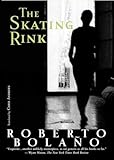 More straightforward than Monsieur Pain, this early novel seems like another pass at the material in Antwerp/”People Walking Away.” It’s a quick, entertaining read, but for me the strange characterological magic that makes the voices in the later novels come alive never quite happens in this one.
More straightforward than Monsieur Pain, this early novel seems like another pass at the material in Antwerp/”People Walking Away.” It’s a quick, entertaining read, but for me the strange characterological magic that makes the voices in the later novels come alive never quite happens in this one.
4. The Romantic Dogs
On its own, The Romantic Dogs is a fine collection. The same poem-to-poem unevenness that mars The Unknown University is present here, but because the selection tends toward the longer, more narrative poems, more of Bolaño makes it through the translation. Still, if much of what’s here is included there, this edition would seem to have been superseded for all but the most ardent Bolañophiles. See also: Tres.
5. Tres
See The Romantic Dogs.








